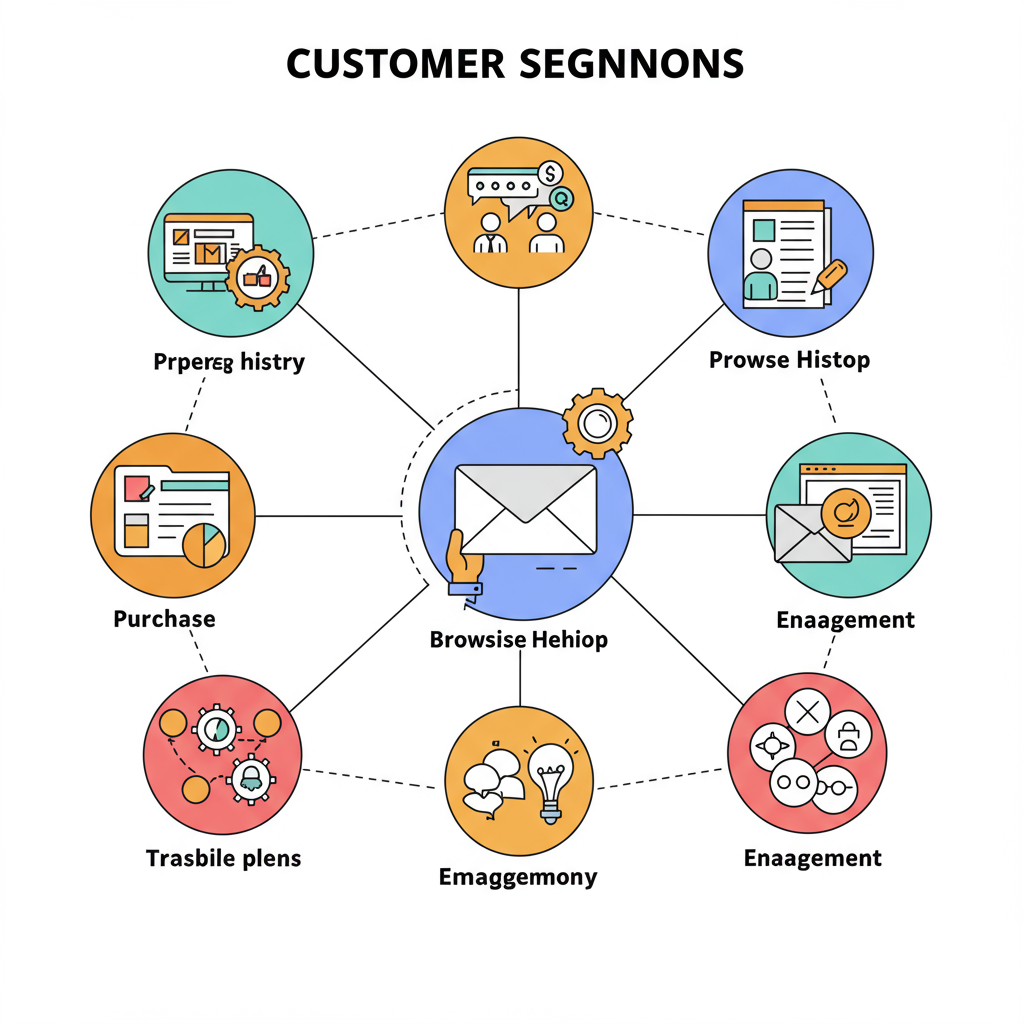Discover how I leverage customer data to send targeted emails that convert and build lasting relationships.
As a Shopify merchant, I’m constantly looking for ways to connect more effectively with my customers and drive sales. One strategy that has consistently delivered outstanding results for me is email campaign segmentation.
Gone are the days when a single, generic email blast to your entire list was enough. Today’s customers expect relevance, and if you’re not delivering it, you’re leaving money on the table.
So, what exactly is email segmentation? In simple terms, it’s the process of dividing your email subscriber list into smaller, more targeted groups based on specific criteria.
For me, it’s about understanding my customers better. It’s about sending the right message to the right person at the right time, rather than a one-size-fits-all approach.
The core benefit I’ve seen is increased relevance. When an email feels like it was written just for me, I’m far more likely to open it, read it, and act on it.
This translates directly into higher open rates, better click-through rates, improved conversion rates, and ultimately, more sales for my Shopify store.
The beauty of running a Shopify store is that you’re already collecting a wealth of customer data. This data is pure gold for segmentation.
One of the most powerful ways I segment my audience is by their **purchase history**. This includes first-time buyers, repeat customers, high-value customers, or even those who’ve purchased specific product categories.
For instance, I send a special welcome series to first-time buyers, while my loyal, repeat customers receive exclusive early access to new collections or special loyalty discounts.
Another crucial segment I utilize is based on **browsing behavior**. This includes customers who’ve viewed certain products, visited specific pages, or, most importantly, abandoned their shopping carts.
My abandoned cart recovery emails are highly segmented, often tailored to the value of the cart or the specific items left behind. This personalization significantly boosts recovery rates.
I also pay close attention to **email engagement**. I segment subscribers based on whether they frequently open my emails, click on links, or if they’ve become inactive.
For my inactive subscribers, I run re-engagement campaigns designed to win them back with compelling offers or a reminder of the value I offer.
While less common for all Shopify stores, **demographic and geographic data** can also be powerful if you collect it. This might include location, age, or gender.
If I’m running a local pop-up shop or a promotion specific to a certain region, I can easily target only the relevant customers.
Understanding the **customer lifecycle stage** is also vital. Are they a new subscriber, an active customer, at-risk of churning, or already lapsed?
Each stage requires a different communication strategy. My win-back campaigns, for example, are specifically designed for customers who haven’t purchased in a set period.
So, how do I actually implement this? Shopify itself offers basic customer grouping features, which are a good starting point for simple segmentation.
However, for advanced segmentation and automation, I rely heavily on integrated email marketing platforms like Klaviyo, Mailchimp, or Omnisend.
These platforms seamlessly sync with my Shopify store, pulling in all the rich customer data I need to create highly specific segments and automated flows.
Let me share some practical segmentation strategies I’ve implemented that you can adopt for your Shopify store.
My **Welcome Series** for new subscribers is segmented based on how they signed up (e.g., pop-up, checkout). It introduces my brand story and highlights best-selling products.
The **Abandoned Cart** flow is my absolute must-have. I segment these further by cart value, sending different incentives for high-value carts versus low-value ones.
My **Post-Purchase Sequences** are segmented by the product purchased. If someone buys a specific item, I can cross-sell complementary products or ask for a review of that exact item.
I run dedicated **Win-Back Campaigns** for customers who haven’t purchased in 60, 90, or 120 days, offering a special discount to encourage a return.
For my most loyal customers, I have a **VIP/Loyalty Segment**. They receive exclusive early access to sales, new product launches, and personalized thank-you notes.
I also create **Product-Specific Segments**. If I launch a new accessory, I’ll target customers who previously bought the main product it complements.
My **Browse Abandonment** emails target customers who viewed several products but didn’t add anything to their cart, reminding them of what they showed interest in.
When you’re starting out, my best advice is to **start simple**. Don’t try to create 50 segments on day one. Pick 2-3 key segments and master them.
Always **test and iterate**. A/B test your subject lines, email content, and calls to action within each segment to see what resonates best.
**Personalize your content** as much as possible. Use their name, reference their past purchases, or acknowledge their browsing behavior.
Be mindful not to **over-segment initially**. Sometimes, too many tiny segments can become difficult to manage and may not yield significantly better results than broader ones.
I make it a point to **regularly review my segments**. Are they still relevant? Are there new opportunities for segmentation based on recent trends or product launches?
Don’t be afraid to **combine segments** for hyper-targeting. For example, ‘High-Value Customers who Abandoned a Cart with a Specific Product’.
Most modern email marketing platforms integrate seamlessly with Shopify, making the technical setup for these segments surprisingly straightforward.
In my experience, email segmentation isn’t just a marketing tactic; it’s a fundamental shift in how you communicate with your customers.
It builds stronger relationships, fosters loyalty, and directly contributes to the growth and profitability of your Shopify store.
**What do you think about this article?** Have you tried email segmentation in your Shopify store, and what results have you seen?
I truly believe that by embracing segmentation, you’ll unlock a new level of engagement and sales for your business. Go forth and segment!






